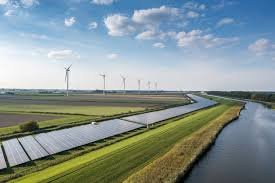As the world becomes increasingly conscious of environmental issues, sustainability has taken center stage across all industries—and facility management is no exception. Facility managers are not only responsible for maintaining the physical environment but also for implementing strategies that promote energy efficiency, reduce waste, and create a healthier, more sustainable workplace. In this blog, we will explore the importance of sustainability in facility management and share effective strategies to build a greener future.
1. Understanding Sustainability in Facility Management
Sustainability in facility management refers to practices that aim to minimize the environmental impact of operating and maintaining buildings. These practices focus on reducing energy consumption, managing resources efficiently, and using eco-friendly materials. In today’s world, organizations are striving to meet sustainability goals not only to comply with regulations but also to enhance their reputation, reduce operational costs, and contribute to the global fight against climate change.
By adopting sustainable practices, facility managers can make significant strides in improving the environmental footprint of their buildings, promoting resource conservation, and ensuring that the work environment is conducive to the well-being of its occupants.
2. Implementing Energy Efficiency Measures
One of the most effective ways to promote sustainability in facility management is through energy efficiency. Buildings are responsible for a large portion of global energy consumption, making energy-saving strategies a top priority. Implementing energy-efficient measures such as upgrading to LED lighting, optimizing HVAC systems, and using energy-efficient appliances can reduce energy usage and lower utility bills.
Additionally, integrating smart technology, like energy management systems (EMS) and building automation systems (BAS), can further optimize energy consumption by automatically adjusting lighting, temperature, and other systems based on real-time needs. These technologies not only improve energy efficiency but also help facility managers track and analyze energy usage, identifying areas for further improvement.
3. Waste Reduction and Recycling Programs
Waste reduction is another critical area in sustainable facilities management. Facility managers can implement robust waste management and recycling programs to reduce landfill contributions and promote the circular economy. By encouraging employees and tenants to recycle paper, plastic, glass, and metal, organizations can significantly reduce their waste footprint.
Moreover, facility managers can adopt strategies like composting organic waste and opting for reusable or biodegradable products. In addition to waste reduction, facilities can also improve the longevity of materials and resources through effective maintenance and repair programs, reducing the need for replacement items and minimizing waste generation.
4. Water Conservation
Water conservation is a key component of sustainability efforts in facility management. Water is a precious resource, and implementing strategies to reduce water consumption can have both environmental and financial benefits. Installing low-flow fixtures such as faucets, toilets, and showerheads can drastically reduce water usage without sacrificing performance.
Facility managers can also implement rainwater harvesting systems to collect and reuse rainwater for landscaping and other non-potable needs. Additionally, smart irrigation systems can ensure that water is used efficiently by adjusting watering schedules based on weather conditions, preventing water waste.
5. Eco-Friendly Building Materials and Green Certifications
When it comes to sustainability, the materials used in building construction and renovation play a crucial role. Choosing eco-friendly materials, such as recycled, locally sourced, or low-emission products, can reduce a building’s overall environmental impact. Facilities that prioritize sustainable materials and designs not only contribute to the environment but also enhance the health and comfort of their occupants.
Obtaining green certifications, such as LEED (Leadership in Energy and Environmental Design), is another powerful strategy for promoting sustainability. These certifications recognize buildings that meet rigorous environmental standards in areas such as energy efficiency, water conservation, and waste reduction. By striving for green certifications, facility managers can demonstrate their commitment to sustainability and improve their building’s marketability.
6. Encouraging Sustainable Transportation
Another way facility managers can support sustainability is by promoting sustainable transportation options for employees and visitors. Encouraging the use of public transportation, biking, or carpooling can reduce the carbon footprint of a building’s occupants. Providing bike racks, electric vehicle (EV) charging stations, and shuttle services to public transport hubs can help reduce the need for single-occupancy vehicle use.
7. The Role of Facilities Management Services in Sustainability
Partnering with professional facilities management services is an excellent way for organizations to enhance their sustainability initiatives. Facilities management companies specialize in optimizing building operations, ensuring energy efficiency, and implementing sustainable practices. These services can provide expert guidance on sustainable strategies, help with waste management and recycling programs, and assist in obtaining green certifications.
By leveraging the expertise of facilities management services, businesses can stay ahead of sustainability trends, reduce operational costs, and demonstrate their commitment to environmental stewardship.
Conclusion
Sustainability in facility management is not just a trend—it’s a necessary shift towards a greener future. By adopting energy-efficient technologies, reducing waste, conserving water, and choosing sustainable materials, facility managers can make significant contributions to environmental preservation. With the support of professional facilities management services, organizations can integrate sustainability into their operations, creating a healthier, more efficient, and eco-friendly environment for everyone. As we move forward, these strategies will become even more important in shaping the future of facility management.
